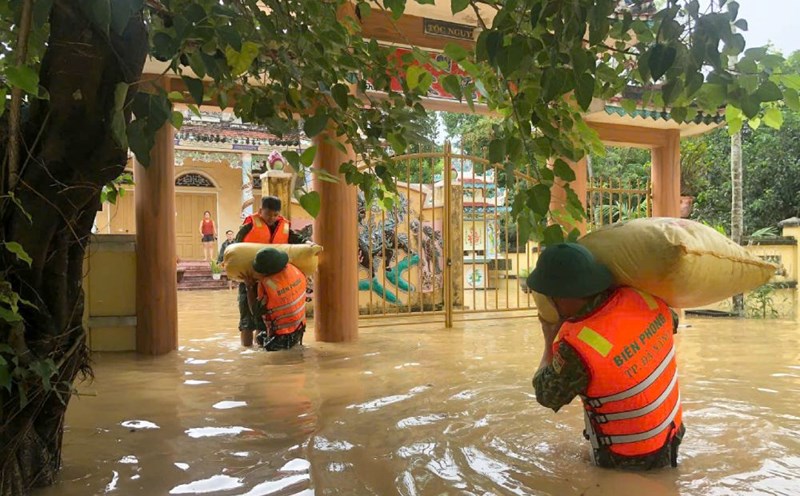On behalf of the Secretariat and Politburo member, Standing member of the Secretariat Tran Cam Tu signed and issued Conclusion No. 213-KL/TW dated November 21, 2025 on continuing to implement Directive No. 42-CT/TW, dated March 24, 2020 of the Secretariat on strengthening the Party's leadership in preventing, responding to and overcoming the consequences of natural disasters.
According to the conclusion, after 5 years of implementing Directive No. 42-CT/TW, dated March 24, 2020 of the Secretariat, the leadership of the Party and the management of the State on preventing, responding to, and overcoming the consequences of natural disasters have had many positive changes, contributing to minimizing damage to people and property. In addition to the achieved results, there are still some limitations and weaknesses.
Forecasting climate change, the natural disaster situation is increasingly complex and unpredictable, directly affecting people's lives and the development of the country.
To promote the achieved results, overcome the shortcomings, limitations and be more proactive in preventing, responding to and overcoming the consequences of natural disasters, the Secretariat requests Party committees, Party organizations, authorities, state management agencies, the Vietnam Fatherland Front, socio-political organizations, and unions at all levels to continue to thoroughly grasp and resolutely implement the tasks and solutions stated in Directive No. 42-CT/TW, while focusing on leading and directing the implementation of a number of key tasks.
In particular, Party committees, Party organizations, and authorities at all levels, especially heads of Party committees, agencies, and units, must thoroughly grasp the viewpoint of proactively adapting to extreme climate change and weather, respecting natural laws, ensuring sustainable development; linking the requirements of natural disaster prevention and control, nature conservation with the accounting of investment in investment projects and works; promoting decentralization and delegation of authority in preventing, responding, and overcoming natural disasters to ensure people, work, progress, authority, responsibility, and clear results.
In 2026, basically complete the review and timely institutionalization of the Party's policies and orientations into legal documents, mechanisms, policies on natural disaster prevention and control, other relevant specialized legal documents and guiding documents for implementation; complete the system of national technical standards and regulations, design targets for the infrastructure system, especially dykes, dams, flood drainage works, energy infrastructure, communications... to ensure adequate capacity to withstand extreme natural disasters;
Amend and supplement the planning of the warehouse system, regulations on listing, exporting, and granting national reserve goods to promptly overcome the consequences of natural disasters; perfect regulations on handling and resolving emergency situations;
Adjust the operating procedures of inter-reservoirs and single-reservoir hydropower and irrigation reservoirs, in which priority must be given to allocating useful capacity of reservoirs to cut floodwaters downstream; have mechanisms to mobilize resources from organizations, businesses, individuals and encourage and support the development of funds, financial institutions, and credit to effectively participate in natural disaster prevention and control.
The Conclusion also outlines the task of proactively supplementing and adjusting strategies, plans, and solutions for preventing, responding to, and overcoming the consequences of natural disasters in accordance with the reality of each region and locality, especially maintaining regular and continuous operations of shelters, hospitals, schools, transport infrastructure, electricity, communications, etc. when natural disasters occur;
Strengthen the integration of natural disaster prevention and control requirements in planning, investing in urban construction, residential areas, infrastructure works; arrange, rearrange and improve response capacity of residential areas and tourist areas in areas at high risk of natural disaster impacts; strengthen the protection of flood drainage space in river basins, riverbeds, ensuring flood drainage capabilities...












